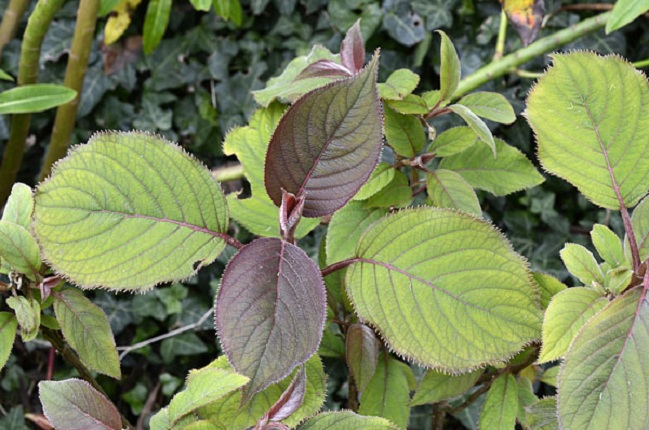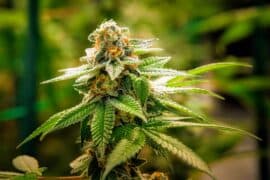Japanese hydrangea vine
(Hydrangea stylosa)

Description
Hydrangea stylosa is a species of flowering plant in the Hydrangeaceae family. It is commonly known as the climbing hydrangea or the Japanese hydrangea vine. This plant is native to Japan and Korea, where it grows in moist, shady areas such as forests, stream banks, and rocky cliffs. Hydrangea stylosa is a beautiful plant that produces attractive flowers in late winter to early spring. In this article, we will discuss the plant's appearance, cultivation, and care requirements. Description Hydrangea stylosa is a deciduous woody vine that can grow up to 10 meters in length. The plant has twining stems that climb up trees or other structures. The leaves are ovate to elliptical in shape and measure up to 10 cm in length. They have a dark green color on the upper surface and a lighter shade on the lower surface. The plant produces large clusters of pink, blue, or white flowers in late winter to early spring. The flower clusters are up to 10 cm in diameter and contain both fertile and sterile flowers. Cultivation Hydrangea stylosa is a relatively easy plant to cultivate, and it can be propagated from stem cuttings or by layering. Here are the cultivation steps for Hydrangea stylosa: Propagation by Stem Cuttings: Take stem cuttings in early summer, when the plant is actively growing. Cut a 10cm length of stem just below a node, remove the lower leaves, and dip the cut end in rooting hormone powder. Plant the cutting in a pot filled with a well-draining potting mix and keep it in a partially shaded location. Water the cutting regularly and keep the soil moist but not waterlogged. The cutting should root in a few weeks and can be transplanted to a larger pot or directly into the ground. Propagation by Layering: Choose a low-hanging stem and bend it down to the ground. Make a small cut on the underside of the stem where it touches the soil and apply rooting hormone to the wound. Cover the cut with soil and secure the stem to the ground with a U-shaped wire or a small rock. Keep the soil moist and wait for the stem to root, which can take several months. Once the stem has rooted, cut it from the parent plant and transplant it to a new location. Planting: Hydrangea stylosa prefers a partially shaded location with protection from direct sunlight, especially during the hot summer months. Choose a spot with well-draining soil that is rich in organic matter. Dig a hole that is slightly larger than the root ball of the plant and plant the hydrangea at the same depth it was growing in its previous location. Water the plant deeply and mulch around the base with a layer of organic material. Watering: Hydrangea stylosa requires regular watering, especially during the summer months. Water the plant deeply once a week, or more often if the soil dries out quickly. Avoid overwatering, which can lead to root rot. Fertilizing: The plant should be fertilized in early spring with a slow-release fertilizer. Follow the manufacturer's instructions for the proper dosage. By following these cultivation steps, you can successfully grow Hydrangea stylosa in your garden or as a potted plant. With proper care, the plant will produce attractive flowers and foliage year after year. Care Requirements Hydrangea stylosa is a relatively easy plant to care for, and it requires minimal maintenance. Here are the care requirements for Hydrangea stylosa: Sunlight: Hydrangea stylosa prefers a partially shaded location with protection from direct sunlight, especially during the hot summer months. The plant can tolerate full shade, but it may not flower as profusely. Soil: The plant prefers a moist, well-drained soil that is rich in organic matter. The soil should be kept moist but not waterlogged. Watering: Hydrangea stylosa requires regular watering, especially during the summer months. Water the plant deeply once a week, or more often if the soil dries out quickly. Fertilizer: The plant should be fertilized in early spring with a slow-release fertilizer. Follow the manufacturer's instructions for the proper dosage. Pruning: Pruning should be done in late winter or early spring to control the plant's size and shape. Remove any dead or damaged branches and cut back any overgrown stems. You can also prune the plant to encourage more flowering by removing some of the older wood. Training: Hydrangea stylosa can be trained to climb up walls or other structures using a trellis or wires. You may need to provide additional support for the plant as it grows. Mulching: Mulch around the base of the plant with a layer of organic material, such as shredded bark or compost. This will help to retain moisture in the soil and suppress weed growth. By following these care requirements, you can ensure that your Hydrangea stylosa plant remains healthy and produces attractive flowers year after year. Uses Hydrangea stylosa has several uses, both ornamental and medicinal. Ornamental Uses: Hydrangea stylosa is commonly used as an ornamental plant in gardens and landscapes. The plant's attractive flowers and foliage make it an ideal choice for shady areas or as a climbing vine on walls or trellises. The plant is also used in cut flower arrangements. Medicinal Uses: Hydrangea stylosa has been used in traditional medicine for its anti-inflammatory and anti-cancer properties. The plant contains several bioactive compounds, including hydrangenol, which has been shown to have anti-inflammatory and anti-cancer effects. The plant is also used to treat gastrointestinal disorders, urinary tract infections, and skin diseases. In addition, the plant is believed to have diuretic properties, and the root is sometimes used to treat edema (swelling caused by excess fluid in the body). However, it is important to note that further research is needed to fully understand the potential medicinal benefits and risks of using Hydrangea stylosa for these purposes. Conservation Status The conservation status of Hydrangea stylosa is not currently evaluated on the IUCN Red List of Threatened Species. However, as with many plant species, the habitat loss and fragmentation caused by human activities such as deforestation and urbanization can pose a threat to the survival of the species in the wild. Therefore, conservation efforts are important to ensure the preservation of this species and its habitat. Conclusion Hydrangea stylosa is a beautiful plant that is easy to grow and requires minimal maintenance. The plant's attractive flowers and foliage make it an ideal choice for gardens and landscapes. The plant's medicinal properties make it a valuable addition to traditional medicine. If you are looking for a plant that is easy to grow and provides year-round interest, then Hydrangea stylosa is definitely worth considering.
Taxonomic tree:







